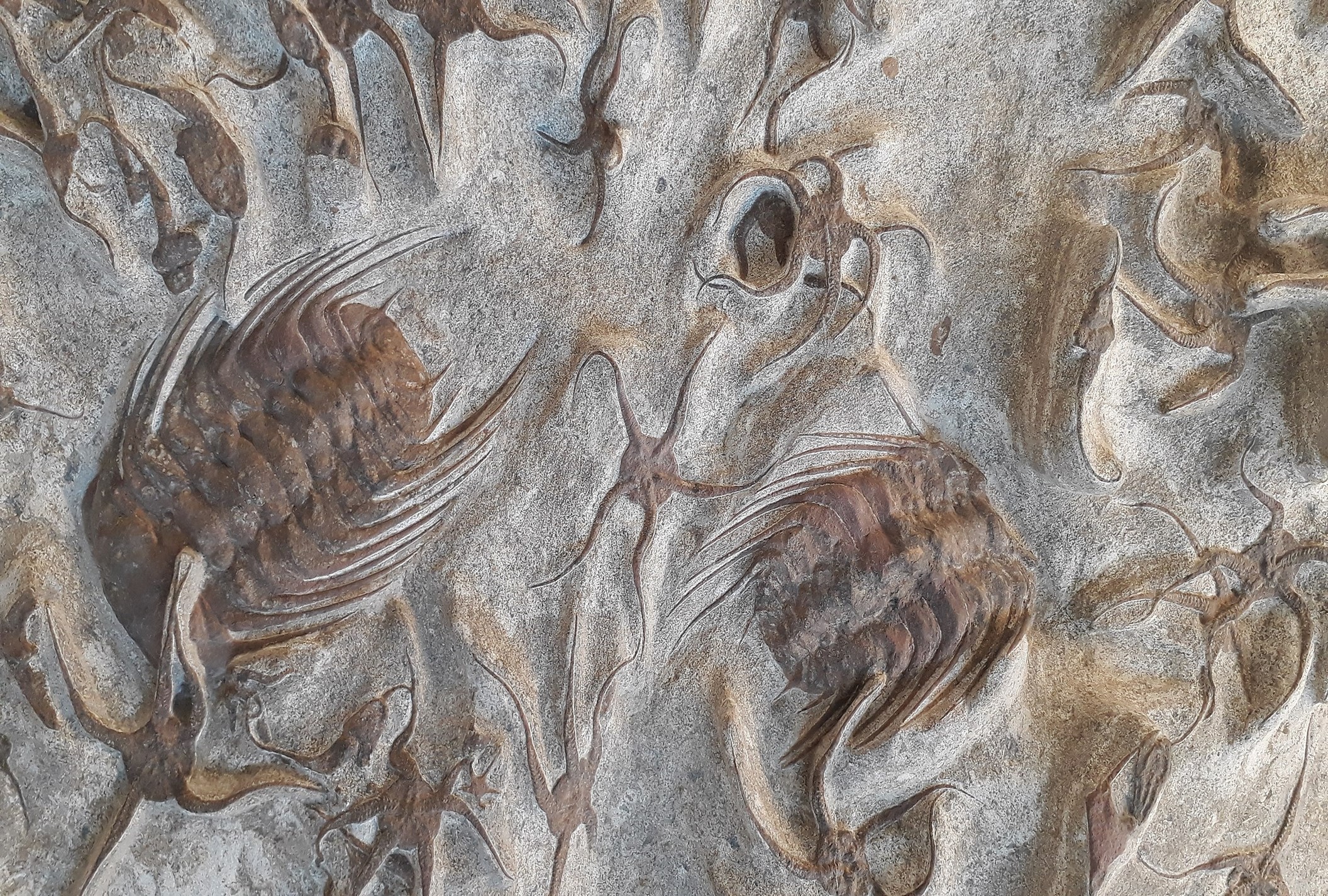
Credit: RomanDeckert, via Wikimedia Commons
We’ve talked a lot about fossils on EarthDate, but we’ve never talked about how they form.
Normally, when a plant or animal dies, it decays or is consumed. But occasionally its remains are preserved as a fossil.
This usually happens when the organism is buried quickly in sediment. The sediment layer protects it from the elements, scavengers, even oxygen. Often soft parts decompose, leaving bones, teeth, shells, or exoskeletons.
As the sediment gradually hardens into rock, mineralized water is absorbed into the pores of the remains, gradually replacing the original material with rock.
Fossils are often skeletons or seashells, but other materials can be fossilized: feathers, trees, leaves and seeds—dinosaur eggs, even animal poop, called coprolites.
Amber is lithified tree sap that may trap and preserve small organisms within it, like mosquitos.
The footprints of animals can be covered in sediment and preserved as fossil trackways, allowing us to study the way creatures moved, even their social structures.
But the most common and numerous fossils are microscopic. In some places where ancient plankton rained down to the sea floor for millions of years, their exoskeletons have compacted together to form thick chalk deposits.
Fossils provide records of the ancient world for us to read today, informing science and underpinning many of the stories you’ve heard on EarthDate.
Background
Synopsis: October 12 is National Fossil Day! Anyone with a keen eye can be a fossil collector, but it helps to look in sedimentary rocks where wind and water help to bury and preserve dead organisms. Fossils can form in many ways, but the best preservation occurs when fossils are buried quickly, like when floods occur.
- Fossils are the lithified remains of once living things, ranging from microbes to animals and plants.
- Fossilized remains can be perfectly preserved, sometimes showing live action frozen in time.
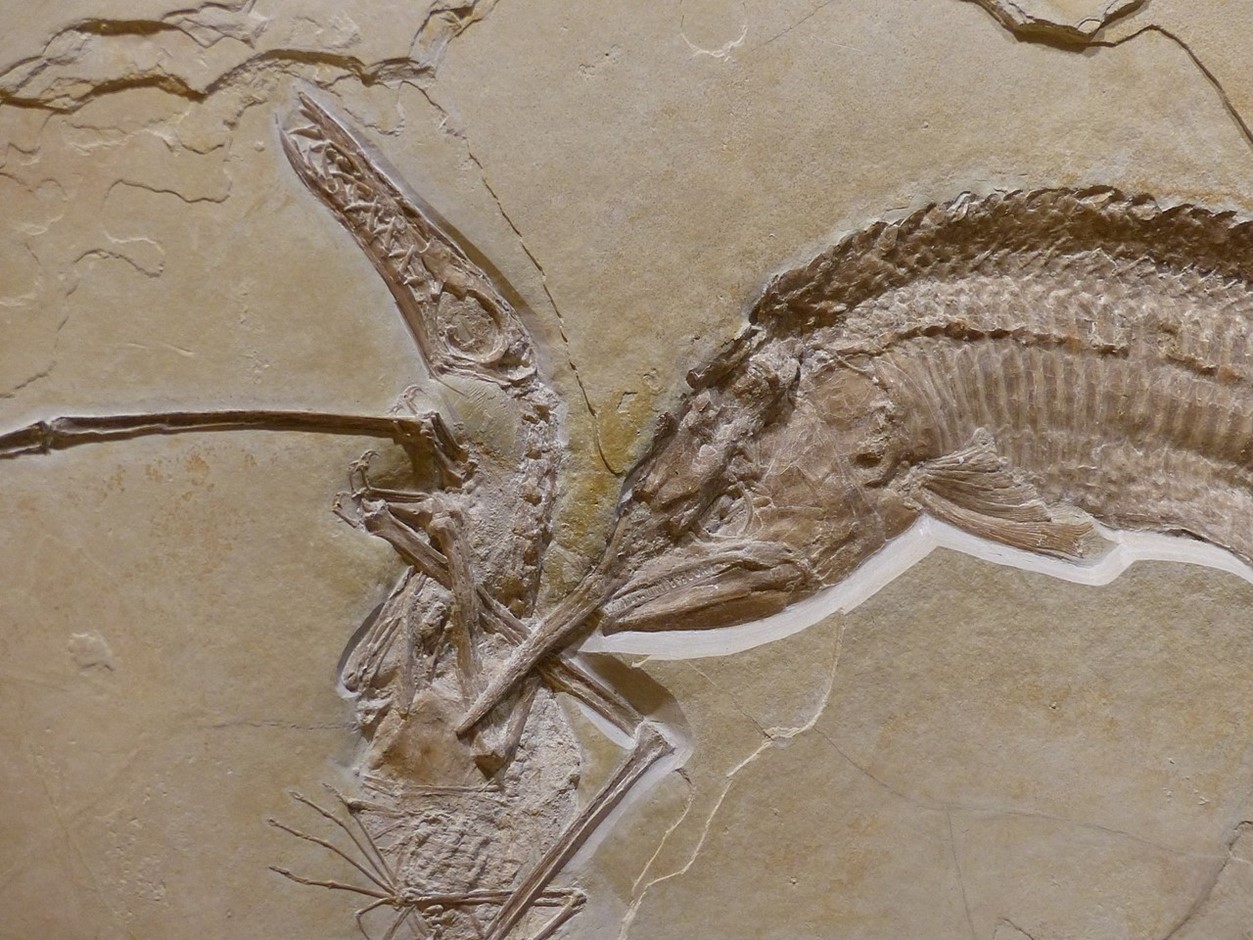
Fossil of a predatory fish (Aspidorhynchus), in the act of capturing a small Rhamphorhynchus pterosaur. This fossil is shown in the Bürgermeister Müller Museum in Solnhofen, Germany.
Credit: Christian Reinboth, via Wikimedia Commons - Fossils help us to understand prehistoric life on Earth.
- When organisms die, most are naturally recycled by decaying or by being consumed, but under certain conditions they may be preserved, creating a fossil.
- Fossilized remains can be perfectly preserved, sometimes showing live action frozen in time.
- Petrification, or permineralization, is the most common form of fossilization.
- When an organism dies and is buried in sediment, its soft tissues eventually decompose, leaving behind its hard parts, like bones, exoskeletons or shells.
- As the rock lithifies, mineralized water seeps into spaces in the hard parts turning the fossil to rock.
- In some cases, water completely dissolves the hard parts.
- Minerals may completely replace the hard parts during the replacement process.
- Dissolution may result in a void called an external mold.
- If the mold is later filled with other minerals, the result is called a cast.
- Sometimes an internal mold is created when sediments fill an internal void, like a shell or skull; then the hard parts dissolve away.
- Sometimes burial increases the exposure of heat and pressure to the tissues of dead organisms, resulting in the soft parts producing a carbon residue in the rock.
- This carbonization may produce a carbon impression of the entire organism, tissues and all, in the rock.
- Some of this organic material has been dated to the Cretaceous and Jurassic Periods, from 66 to 199 million years ago, and contain proteins that match bird proteins, strengthening the link between dinosaurs and birds (ED-030 Dinosaurs in Your Backyard).
- Other fossils form by encasement in tree resin or tar.
- Fossilized insects, flowers, and baby dinosaurs with feathers in amber provide a window into the past.
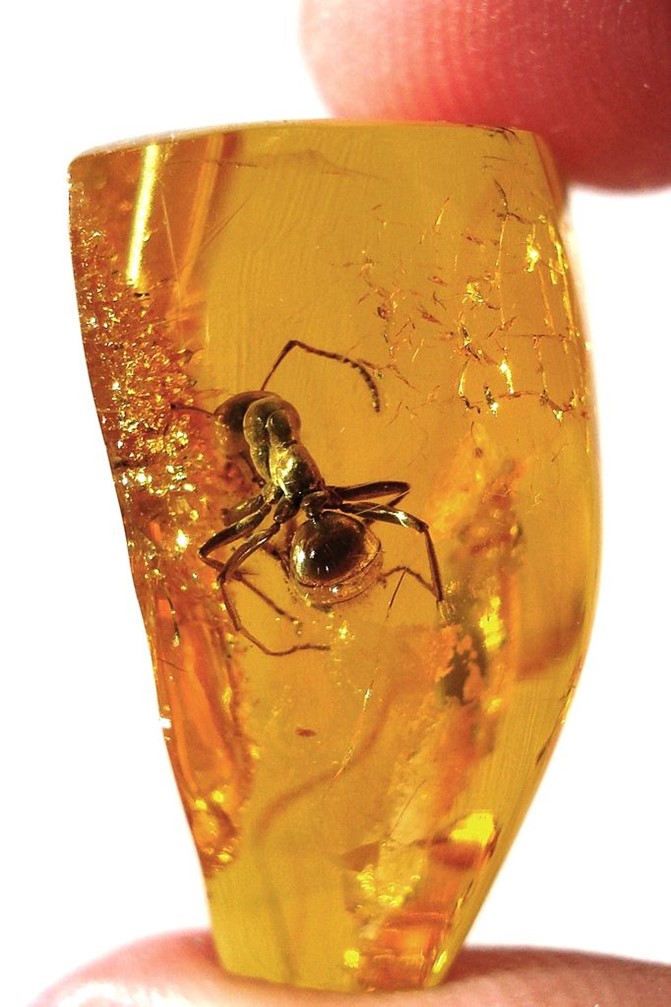
More than 34 million years ago, sticky tree resin trapped a ¼-inch (7 millimeter) long Eocene ant in today’s Baltic region.
Credit: Anders L. Damgaard - www.amber-inclusions.dk - Baltic-amber-beetle, via Wikimedia Commons - The La Brea is a famous paleontological site where many Ice Age animals were trapped in a sticky tar seep near present day Los Angeles.
- Fossilized insects, flowers, and baby dinosaurs with feathers in amber provide a window into the past.
- The impressions made in mud or sand by organisms may also be preserved on lithified surfaces as trace fossils, or ichnofossils.
- Sets of footprints teach us about how ancient critters moved from place to place alone or in groups known as trackways.
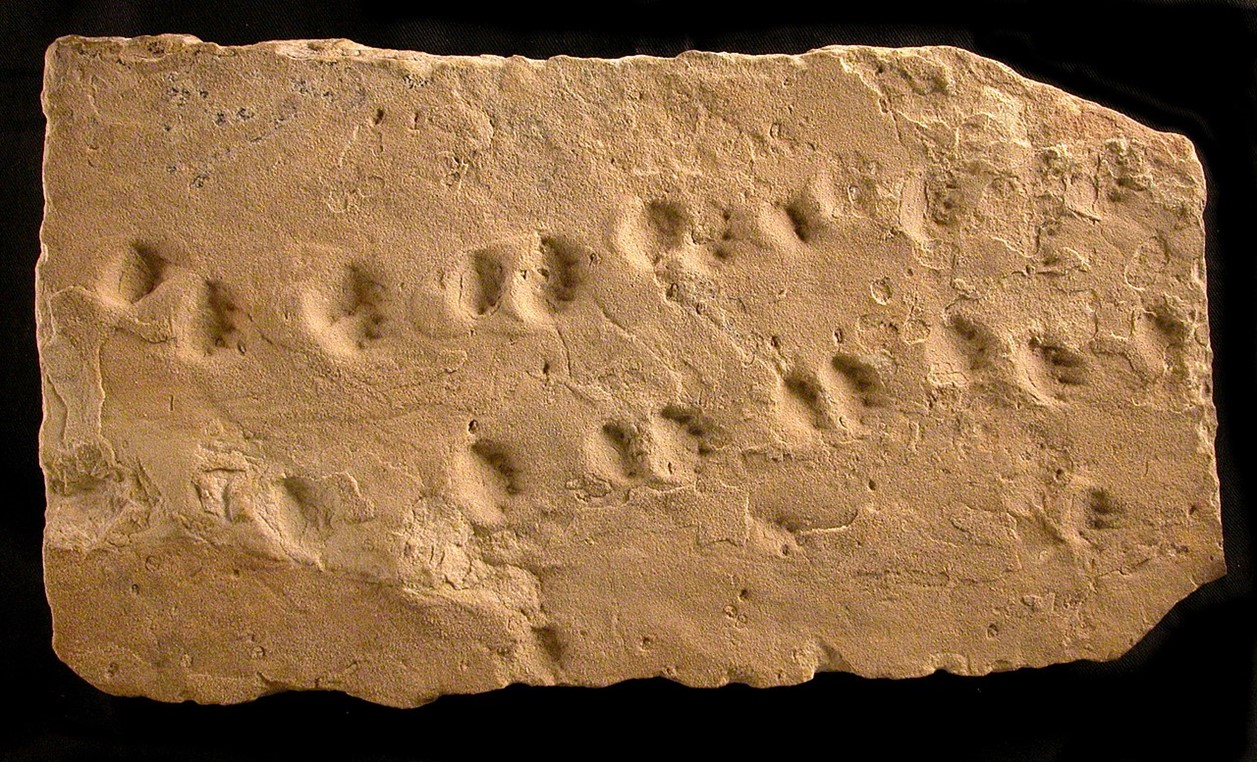
Fossil track - horizon: Coconino 150 feet from base Coconino. The Permian Coconino Sandstone formed as the area dried out and sand dunes made of pure quartz sand invaded a growing desert some 260 million years ago. Today, it is a 375 to 650 feet (115 to 200 meters) thick golden white to cream-colored cliff-former, a more erosion-resistant unit of bedrock, near the canyon's rim.
Credit: Grand Canyon National Park, public domain, via Wikimedia Commons - Other trace fossils may represent the burrows of animals or the roots of plants.
- Sets of footprints teach us about how ancient critters moved from place to place alone or in groups known as trackways.
- The largest population of fossils are microscopic and are intermingled with rock particles in sedimentary rocks.
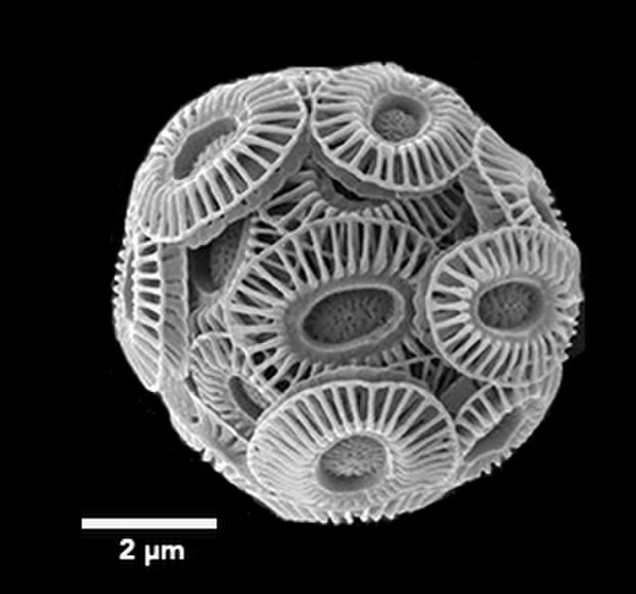
Emiliania huxleyi is a species of coccolithophore, a photosynthetic plankton that freely drift in the euphotic zone of the ocean, forming the basis of virtually all marine food webs. It evolved 270,000 years ago and became abundant in the fossil record 70,000 years ago. In comparison, the diameter of human hair ranges from 17 to 181 micrometers.
Credit: Griet Neukermans and Georges Fournier (Dr. Jeremy Young, University College London, London, with permission), via Wikimedia Commons- As tiny nannoplankton die and rain down to the ocean floor, under the right conditions their calcium carbonate skeletons may accumulate to build thick chalk deposits like the famous White Cliffs of Dover.
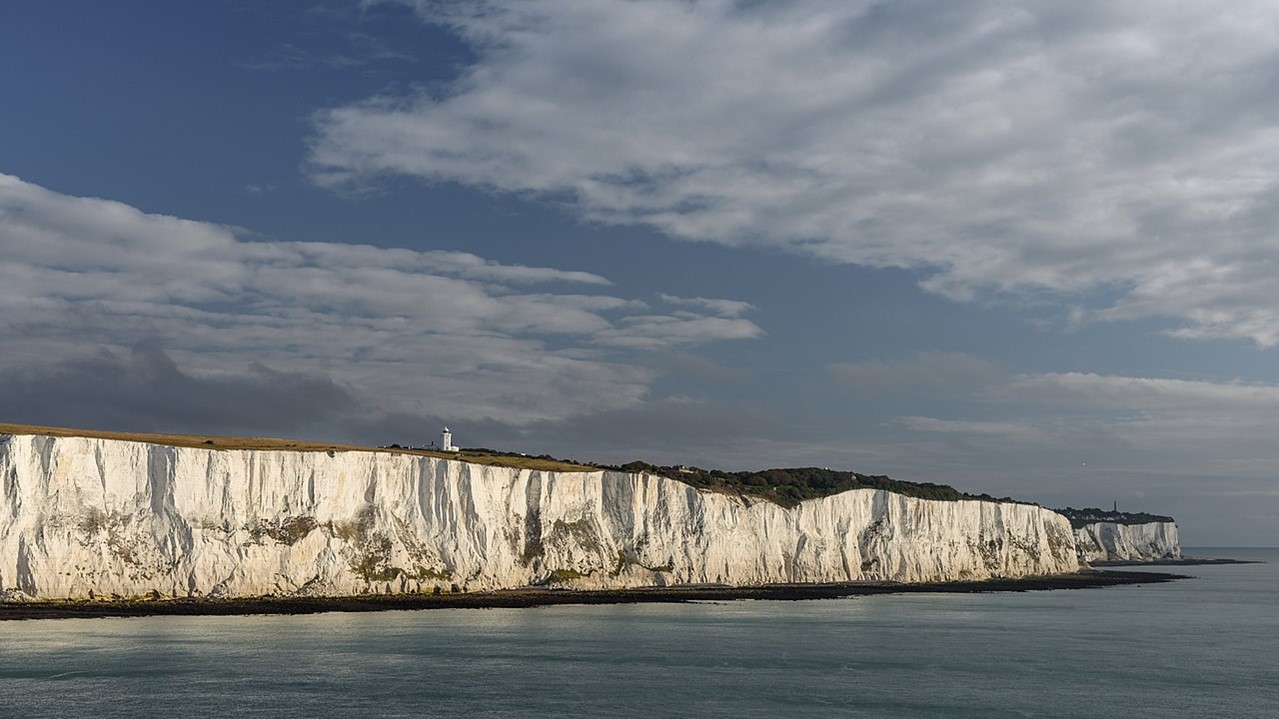
The White Cliffs of Dover in southern England are made entirely of the coccoliths (plates) that covered tiny single-celled nannoplankton.
Credit: Mustang Joe, public domain, via Wikimedia Commons
- As tiny nannoplankton die and rain down to the ocean floor, under the right conditions their calcium carbonate skeletons may accumulate to build thick chalk deposits like the famous White Cliffs of Dover.
- If you want to find fossils, it is important to look for them in the sedimentary rocks near where they lived.
- Sedimentary rocks are deposited by wind and water, then buried. Fossils do not occur in igneous rocks that cooled from molten rock and are usually obliterated from metamorphic rocks that are heated under pressure.
- Ancient floods bury organisms rapidly, so fossils from these events tend to be well-preserved.
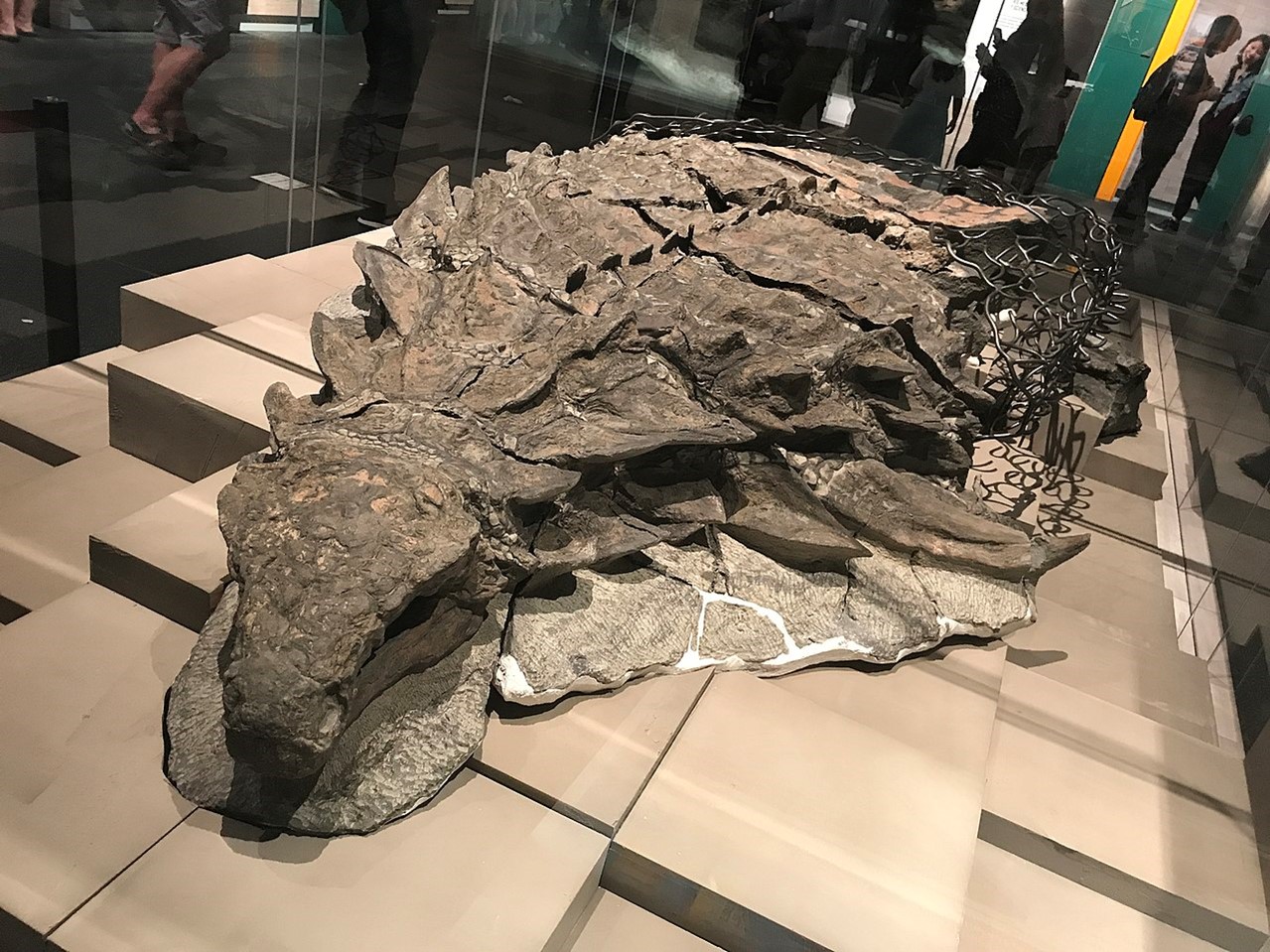
This nodosaur was swept out to sea in a flood, buried in marine sediments, and recently found remarkably well-preserved in a Canadian quarry.
Credit: Wikimedia Commons - Since dinosaurs are Mesozoic animals, you need to look in Mesozoic rocks to find dinosaur fossils. For Ice Age fossils, look in Ice Age rocks.
- Lakeshores, roadcuts along highways, and construction sites are great places to look for fossils that have been recently unearthed. Be sure to get permission.
- Even paleontologists must persevere to find fossils, so keep your eyes open.
- Remember that fossils may be fragile, so you may need to wrap them in tissue to transport them.
- If you are curious about a find, contact your local museum or university geology department.
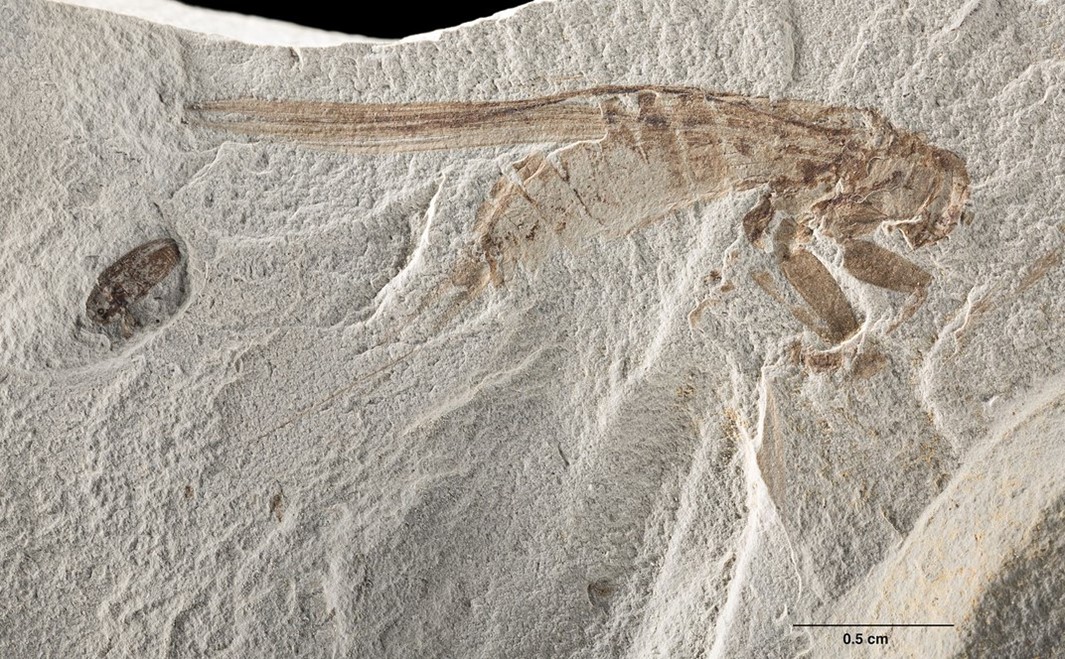
Gryllidae, a 20-million-year-old fossilized spider cricket from the Miocene Era of the Dominican Republic.
Credit: James Di Loreto, NMNH

